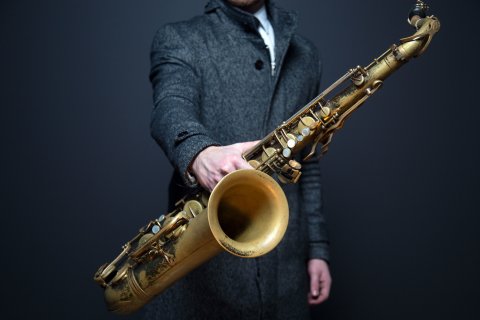Today, April 30, the world celebrates International Jazz Day. The celebration was officially introduced in 2012 following the 2011 UNESCO announcement. The event aims to raise public awareness of jazz as the force that promotes peace, unity, dialogue, and understanding between people. Today many public organisations, educational institutions, authorities, and individuals actively support and promote jazz around the world. International Jazz Day is one of the many occasions dedicated to this special music. Jazz originated in the late 19th century in the USA as a synthesis of African and European cultures. It still remains a symbol of union that eliminates the boundaries between different people.
This year, worldwide celebration of International Jazz Day will take place in Australia. The event will see over 30 world-famous jazz masters including Herbie Hancock, James Morrison, Dee Dee Bridgewater and Kurt Elling. The lucky audience will enjoy performances by jazz maestros from over ten countries. Thousands of programs (lectures, films, book readings, performances, master classes, workshops, etc.) will celebrate jazz all over the world as a universal language of peace and friendship.
To honour jazz music, we offer a list of jazz singers who have completely changed and shaped the music industry. Here are the immortal masters of jazz music:
Louis Armstrong (1901-1971)
Best known for his trumpet playing, Louis Armstrong was also a talented jazz singer. His warm, raspy voice delighted audiences, as did his humorous scat singing. The joy that Armstrong brought to his music is partly what allowed him to be considered the father of modern jazz.
Johnny Hartman (1913-1983)
Johnny Hartman’s career never fully reached the peak that his talents warranted. Although he recorded with Earl Hines and Dizzy Gillespie, he was best known for the album John Coltrane and Johnny Hartman. Hartman’s lush voice perfectly complemented John Coltrane’s yearning melodies. Although he struggled with his solo career, this exceptional album has earned Hartman a special distinction among jazz singers.
Frank Sinatra (1915-1998)
Frank Sinatra began his career during the swing era, singing with Tommy Dorsey’s big band. Throughout the 1940s, he acquired a large popular following and began starring in musical films, such as It Happened in Brooklyn and Take Me Out to the Ballgame. In the 1960s, Sinatra was a member of the “Rat Pack”, a group of singers including Sammy Davis, Jr, and Dean Martin that performed on stage and in films. For the next several decades, Sinatra performed extensively and recorded best-selling albums.
Ella Fitzgerald (1917–1996)
Ella Fitzgerald's vocal virtuosity equaled that of bebop musicians. She developed a unique scat-singing style and was able to imitate many instruments with her voice. During a career that spanned almost 60 years, Fitzgerald dazzled audiences with her approach to jazz and popular songs alike. Her vocal timbre and technique remain unmatched.
Lena Horne (1917-2010)
Lena Horne got her start as a member of the chorus line at the Cotton Club, a famous jazz club in New York. She was featured in several films throughout the 1940s. However, aggravated by the racism in the film industry, she shifted to a career of singing in nightclubs. She sang with jazz musicians such as Duke Ellington, Billy Strayhorn, and Billy Eckstine and performed popular music too.

Nat “King” Cole (1919-1965)
Nat “King” Cole originally worked as a jazz pianist, but rose to fame in 1943 as a jazz singer especially after his performance of “Straighten Up and Fly Right.” His music was influenced by African-American folk music tradition and early forms of rock n’ roll. With his soft and alluring baritone voice, Cole won popularity among a large audience. Though his long career was filled with obstacles stemming from racism, Nat “King” Cole overcame hurdles to be considered an equal to his white counterparts at the time, such as Frank Sinatra and Dean Martin.
Sarah Vaughan (1924-1990)
Sarah Vaughan began her career opening for Ella Fitzgerald at Harlem’s Apollo Theater. Soon her talents attracted bandleader Earl Hines - a prominent figure during the swing era right before bebop came into fashion. She was Hines’ pianist, but it became evident that she was equally gifted as a jazz singer. Later she joined singer Billy Eckstine’s band, in which she developed a style influenced by bebop pioneers Charlie Parker and Dizzy Gillespie.
Dinah Washington (1924-1963)
Dinah Washington’s roots were in the gospel church. While growing up in Chicago, she played piano and conducted her church choir. At age 18, she joined vibraphonist Lionel Hampton’s big band. There, she developed a rousing vocal style with which she used to make many popular recordings in the veins of jazz, blues, and R&B. Said to be one of Aretha Franklin’s biggest influences, Washington’s boisterous personality carried into her singing.
Nancy Wilson: (1937)
Nancy Wilson enjoyed a quick rise to success. Inspired by Dinah Washington among others, Wilson moved to New York in 1956 where she met saxophonist, Cannonball Adderley. She soon attracted the attention of his agent and record label and began a career as a solo jazz singer. In 1961, she recorded Nancy Wilson/Cannonball Adderley, on which her soulful voice was featured alongside Adderley’s brand of funky hard-bop.
Billie Holiday (1915-1959)
Nicknamed “Lady Day”, Billie Holiday developed her vocal style to match the instrumental style of musicians such as saxophonist Lester Young. Her intimate and vulnerable vocals reflected her tumultuous life and pioneered a dark, personal approach to singing jazz. The liberties she took with structuring a melodic phrase set the standard for jazz singers.




